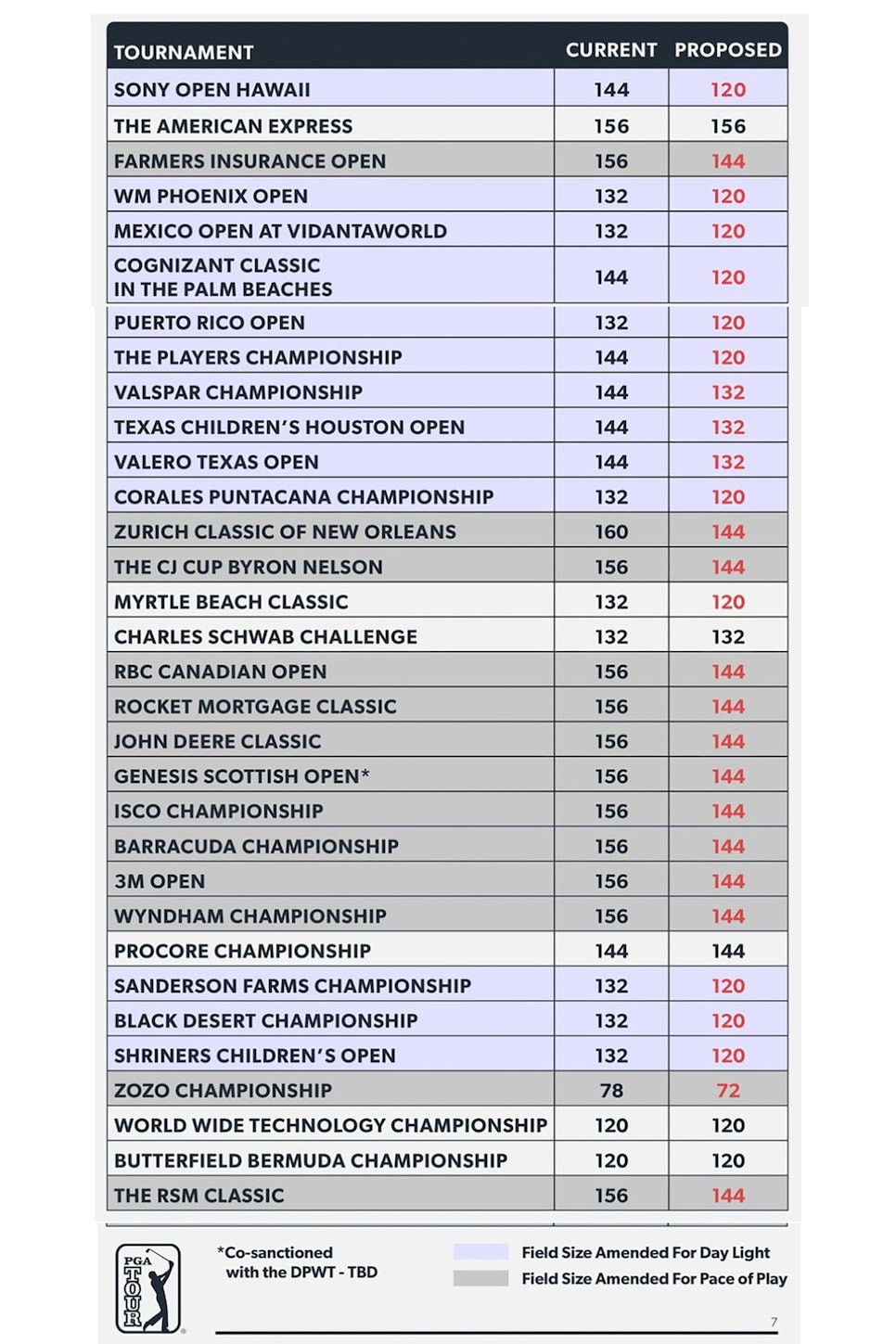The PGA Tour has undergone a dizzying array of changes in the last few years, some voluntarily, some imposed upon it. On Tuesday, however, it was made clear that golf’s strongest circuit has further room to evolve. The tour’s 16-member Player Advisory Council shared a 23-page memo with the entire membership that outlined several proposed changes it’s asking take effect in 2026. They include everything from the reducing the size of tournament fields to whittling down the number of exemption categories, from tweaking FedEx Cup points distributions at certain events to reimagining its pace-of-play policy.
These proposed interconnected changes—to which PAC chairman Camilo Villegas foreshadowed were coming an Oct. 16 memo—are intended to streamline the competitive environment, create more drama and clearer storylines, and improve the overall PGA Tour product. It’s no exaggeration to say that what the tour Policy Board will be voting on when it convenes Nov. 18 is the most sweeping overhaul since the creation of the all-exempt initiative in 1983.
OK … so this is pretty heady stuff. But what do you really need to know about the proposed changes? Here is a primer on the key elements:
What is the most significant change on the table—or at least the one that will be most noticeable?
Smaller tournament fields. The proposal creates a new maximum field size of 144 players (down from 156) in an open tournament held on one course. However, fields can be reduced further to 132 or 120 to account for available daylight. Notably, the Players Championship would be trimmed from 144 to 120.

What is driving this change?
The PAC had been looking at the number of tournaments in which the field failed to complete an otherwise uninterrupted round in the allotted amount of daylight and found that nearly a third of events in 2024 had at least one round suspended by darkness. Not only that but larger fields simply are not conducive to a smooth flow of play, further impacting pace. This also affects practice; players have practiced in the dark in 31 rounds this year, up from 26 a year ago. This is no longer your “Follow the Sun” tour of yore.
So, doesn’t this just mean that players need to play faster?
You would think. Instead, while considering new data, future plans have been put forth to allow more time for a player to execute a stroke and for redefining when a group is actually out of position. Furthermore, fines for bad times or for timings would be reduced.
OK, so if the fields are smaller, won’t that mean few players are getting to play in events?
Yup. Which leads to the next most significant change being proposed.
And that is?
The PAC is calling for significant cuts to the number of players who are exempt on tour each year, while also proposing to limit exemption categories and other qualifying avenues. First and foremost, the plan calls for a reduction in the number of fully exempt players who retain their tour cards off the FedEx Cup points list each year from 125—a number established in 1983 with the creation of the “all-exempt tour—to 100. The Korn Ferry Tour would see a reduction of 10 cards, from 30 to 20. The tour also would cap the Q-School graduated at the top five finishers (it used to be top five and ties) and either eliminate Monday qualifiers or reduce the number from four to two in others during the regular FedEx Cup season, depending on an event’s field size. This is all part of the tour redefining, to some degree, what it means to have a card and its significance. In some ways, the tour is strengthening its position as a meritocracy—drawing a clear distinction from the rival LIV Golf League—by challenge its members to play better in order to keep their tour status.
Did all the tour’s exemption categories see a reduction?
Actually, no. The PGA Tour will continue to offer 10 cards to the top 10 players off the DP World Tour’s Race to Dubai who don’t already hold PGA Tour status. The strong play from Robert MacIntyre, a two-time PGA Tour winner in 2024 after earning his card through this category a year ago, and other DP World Tour grads seemed to justify the decision to create the category in the first place last year. That success, however, shouldn’t have been surprising since these players are generally more seasoned than other “rookies” or young players joining the tour.
Which group of players might have the most reason to grumble?
Plenty of different constituencies probably feel justified in thinking they deserve better, but current and future Korn Ferry Tour players are going to feel particularly squeezed after seeing their exemption allotment reduced to 20. Tuesday’s memo reasserted that the Korn Ferry Tour remains the primary pathway to the PGA Tour. Oddly, however, in the new proposed priority ranking, Korn Ferry Tour players are listed after the DP World Tour top 10. The Korn Ferry Tour PAC is expected to meet in the coming weeks to review field sizes and its eligibility system.
Anything else worth mentioning?
Oh, there’s some nibbling around the edges, such as adjustments to FedEx Cup points in signature events, but, really, isn’t that already enough?
Main Image: Supplied









